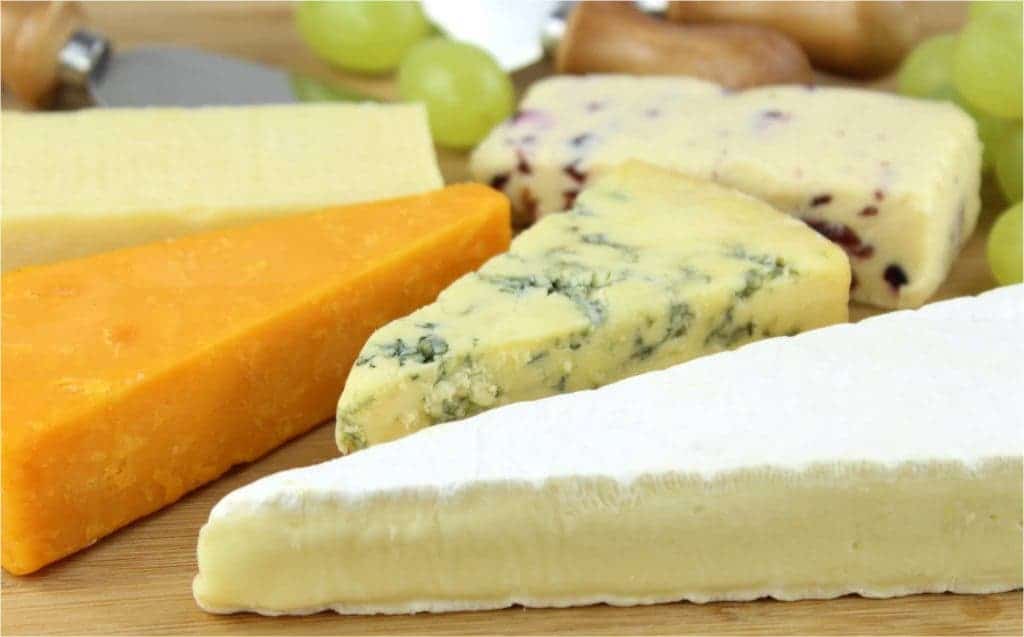In light of Breast Cancer Awareness Month, members of the Physicians Committee for Responsible Medicine (PCRM) are requesting the FDA to label cheese in accordance to studies which found that it raises the risk of several types of cancer — including breast cancer.
“Dairy cheese contains reproductive hormones that may increase breast cancer mortality risk,” the label would read.

The world “cheese” is derived from a Latin word “caseus” which means to ferment. Cheesemaking began at least 8,000 years ago around the time when sheep were first domesticated, as a way to keep dairy edible for longer periods of time. Today, the world has access to hundreds of types of cheese, and we just can’t seem to get enough of it. But while it’s undoubtedly tasty, cheese can have some unwanted health effects..
The nutritional value of cheese varies widely, but the vast majority of cheese is rich in saturated fats, which are a major contributor to cardiovascular diseases and conditions. While they also contain healthy protein and calcium, the fat content is so high that many national health organizations recommend minimizing its consumption and eliminating it from snacks.
However, in recent times, the consumption of cheese has been associated with even more health issues.
“High-fat dairy products, such as cheese, are associated with an increased risk for breast cancer, according to a 2017 study funded by the National Cancer Institute,” reads the petition published by the PCRM, a a non-profit research and advocacy organization based in Washington, D.C. “Researchers examined the dietary intakes of 1,941 women diagnosed with breast cancer and compared them with the diets of women without breast cancer. The results showed that those who consumed the most American, cheddar, and cream cheeses had a 53 percent increased risk for breast cancer. Components in dairy such as insulin-like growth factor (IGF-1) and other growth hormones may be among the reasons for the increased risk for cancer.”
A complex issue
Studies analyzing the link between cheese and cancer have not always yielded clear results. Virtually all studies of this type are observational — they observe a connection, not causation. Based on a systematic review of the epidemiologic literature, there is a probable association between milk intake and lower risk of colorectal cancer, a probable association between diets high in calcium and increased risk of prostate cancer, and limited evidence of an association between milk intake and lower risk of bladder cancer. For other types of cancer, the risks were less clear.
Given the huge variability of cheese and other dairy products out there, it’s difficult to draw a definite line. A recent study found that cheese can raise breast cancer risk, but that yogurt might reduce it. The petition references another study which concluded that among women previously diagnosed with breast cancer, consumption of high-fat dairy products is associated with increased mortality risk.
However, a broad analysis of 9693 studies found major differences in how these studies are carried out. This particular study was essentially a review of previous meta-analyses — themselves studies of other studies — so this is probably the most comprehensive review of dairy-cancer associations out there. The study reports that two meta-analyses showed “increased risk of breast cancer with higher consumption of milk or cheese”, but that 8 meta-analyses showed “non-significant associations between ‘all-dairy products’” and the risk of breast cancer. This is a good depiction of how nutritional science is often unclear due to the sheer complexity of the involved parameters.
Nevertheless, while the evidence isn’t completely conclusive, physicians associated with the PCRM say it’s strong enough to justify labeling cheese — and they do bring some compelling evidence.
“New data from the Women’s Health Initiative show that a lower-fat, higher-carbohydrate diet emphasizing fruits, vegetables, and grains resulted in long-term health benefits. Compared with women who made no diet changes, the dietary intervention group had 15 percent lower long-term risk of breast cancer mortality, a 30 percent reduction in heart disease, and 13 percent lower risk of developing insulin-requiring diabetes. Possible mechanisms for these results include increased fiber intake, reductions in hormones associated with breast cancer, and improvements in LDL cholesterol, blood pressure, insulin, and glucose levels.”
They also provide an explanation for why sometimes, dairy seems to be associated with equal or even lower overall cancer risk.
“It should be noted that limited evidence suggests that dairy intake in general (that is, not specifically high-fat dairy products) is associated with a lower risk of breast cancer.10 This likely is because health-conscious individuals tend to consume high amounts of dairy products due to their successful promotion as “health foods.” High-fat dairy products are much higher than low-fat dairy products in their concentrations of fat, saturated fat, and estrogenic hormones associated with cancer risk.”
Cheesy labels
In light of all this, the physicians argue, cheese should be labeled as a factor of cancer risk. Simply adding a pink ribbon on products is not enough, they conclude.
“To ensure that Americans understand the potential significant risks, and resulting long-term costs, of consuming dairy cheese products, the FDA should ensure that the notice above is prominently placed on product packaging and labeling for all dairy cheese products,” says the petition.
The FDA has not replied to the petition.






